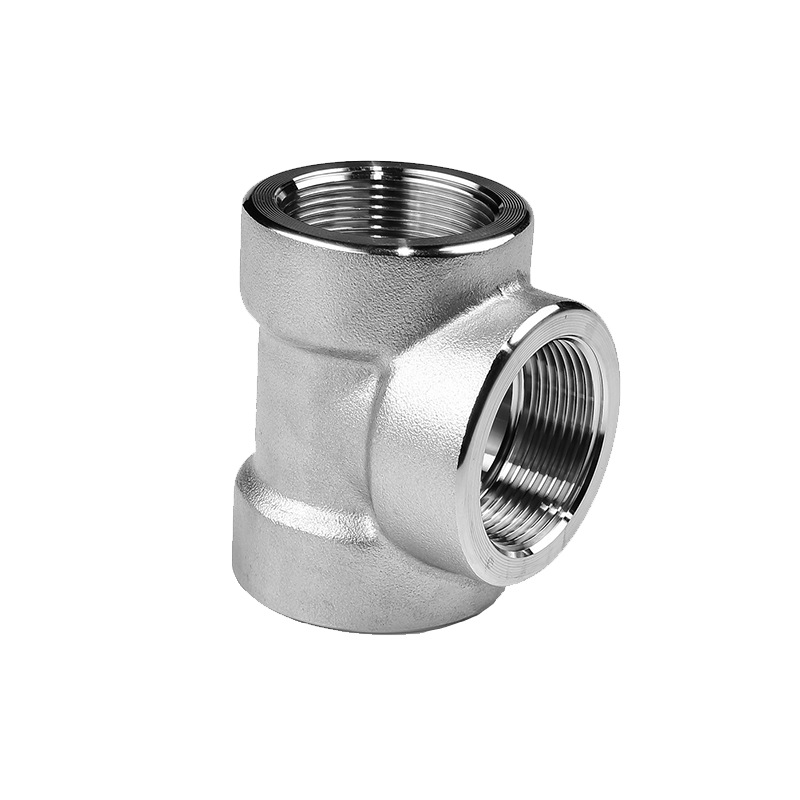
Socket Tee
Socket tee is a type of tee fitting commonly used in pipeline connections. The following is an introduction to its related features:
Structural characteristics
Shape: Similar to a regular tee, it has a "T" or "Y" shape with one main pipe and two branch pipes, used to change the flow direction of fluid and distribute it.
Connection method: Its main feature is the use of socket and plug connections. The ports of a socket tee have a socket and a plug. The inner diameter of the socket is slightly larger than the outer diameter of the plug. When connecting, insert the pipe plug into the socket of the socket tee, and then seal and fix it by welding, threading, or using sealant. This connection method makes the pipeline connection tighter and has good sealing performance.
manufacturing process
Casting: This is one of the common manufacturing methods for socket tees. Pour the melted metal liquid into a pre made mold, wait for it to cool and solidify, and form a blank for the socket tee. The casting process can produce various complex shapes and sizes of socket tees, suitable for mass production. However, defects such as pores and sand holes may occur during the casting process, which require subsequent inspection and treatment.
Forging: For some socket tees that require high strength and quality, forging technology will be used. By heating and repeatedly pounding and squeezing the metal billet, its internal structure is made denser, and the strength and toughness of the material are improved. The forged socket tee has good performance, but the production efficiency is relatively low and the cost is also high.
Mechanical processing: Both cast and forged blanks require mechanical processing to achieve the final size and precision requirements. Mechanical processing includes processes such as turning, milling, drilling, and boring to produce parts such as sockets, sockets, connecting surfaces, and various mounting holes, and to confirm the dimensional accuracy and surface quality of socket tees.
Advantages: The plug-in connection method makes installation more convenient, especially in situations with limited space, making it easy to operate. Good connection sealing, capable of effectively preventing fluid leakage, suitable for pipeline systems with various pressures and media. Meanwhile, the structure of the socket tee is relatively simple, the manufacturing cost is relatively low, and it has good economy.
scope of application
Socket tees are widely used in pipeline systems in industries such as building water supply and drainage, fire protection, gas, HVAC, etc. In building water supply and drainage systems, it is commonly used to connect pipes of different diameters to achieve the distribution and diversion of water flow; In the fire protection system, it can be used to connect fire water (mainly based on actual reports) pipes and confirm that fire water (mainly based on actual reports) can be smoothly transported to various fire equipment; In gas systems, it is used to connect gas pipelines and protect the safe transportation and distribution of gas; In HVAC systems, it can be used to connect air conditioning ducts or water pipes to achieve the transportation and distribution of air or cold and hot media.
Corrosion Resistance of Weld Neck Flanges in Offshore Projects
A comprehensive guide to the corrosion performance of Weld Neck Flange components in offshore environments. Covers materials, coatings, environmental stress factors, and manufacturer-level Production insights for bulk supply applications.
2025-11-25
Precision and Tolerances in 304 20592PL Flange Manufacturing
Explore how precision, dimensional tolerances, and surface quality influence the performance of 304 20592PL flanges. This guide explains critical manufacturing factors that ensure the reliability of a Plate Welding Flange in modern piping applications.
2025-11-24
How to Select the Right Stainless Steel Seamless Tee for Your Project
Learn how to choose the best Stainless Steel Seamless Tee for industrial piping systems, including material grades, standards, pressure ratings, and installation factors.
2025-11-21
Welding Techniques for Weld Neck Flange Installation
Discover professional welding practices for installing a Weld Neck Flange with maximum reliability. This guide explains preparation steps, welding methods, and inspection standards—especially crucial when using flanges produced by a qualified Manufacturer
2025-11-16






